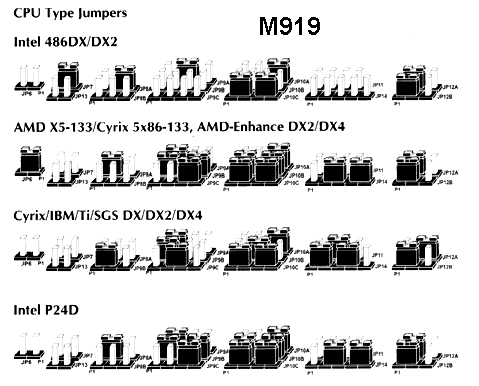First post, by numeriK
Hello everyone, I'm new to VOGONS, but not to "old tech". I grew up with 486's and had the opportunity recently to jump on some old hardware.
Among what I've picked up is a PC Chips M919 v1.5 with what appears to be 1024K cache in each bank (please confirm my suspicions). I booted the motherboard but didn't have an "AT-style" keyboard so I'm unable to do much at this point in time.
More importantly, does anyone know what the plethora of jumpers are for? It seems like there's ~15 more jumpers on this board than the v3.x series, and all I can find online are the spec sheets for the 3.x (doesn't really help me).
Please see the attached pictures, and thanks in advance!
8433UUD v2 | AMD 5x86 @ 180MHz (60MHz x 3, 30MHz PCI) | 64MB EDO | TNT 16MB PCI | SB AWE64 ISA | Win98SE



